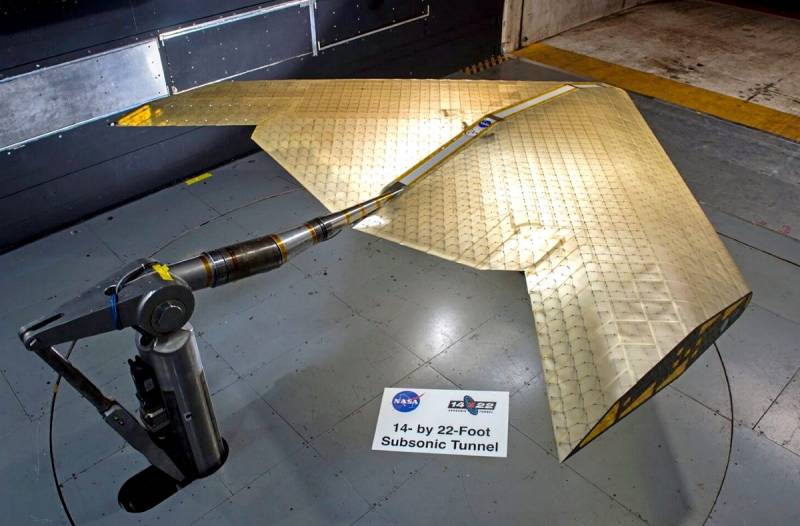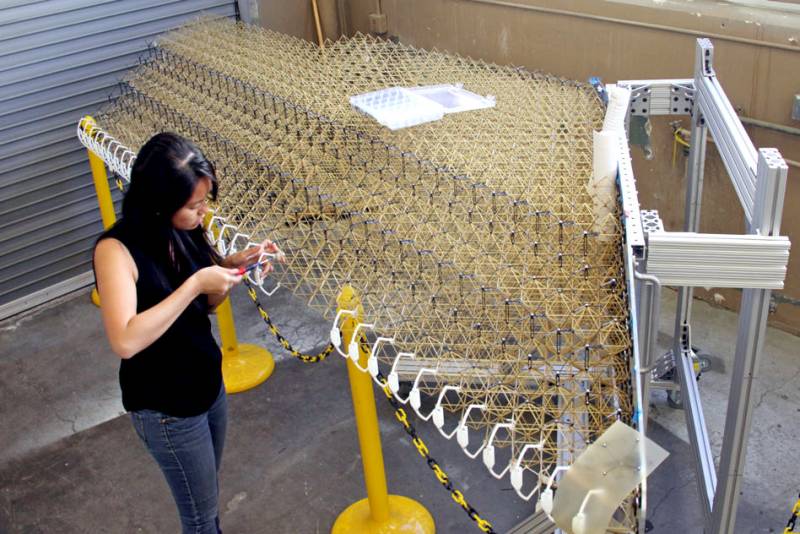NASA has developed the "ideal" wing for the aircraft
The wing of the aircraft has a rather complex internal system consisting of numerous wires, various mechanical elements and engines for controlling the flaps. Naturally, this directly affects the amount spent on creating it and the complexity of the process of further maintenance. However, developers from NASA and researchers from the Massachusetts Institute of Technology proposed the option of an “ideal” wing, which could significantly reduce the cost of the final cost of the aircraft.
It is a design that does not contain separate moving elements, but it is lightweight, flexible and adaptive. This option does not need additional motors to change the position of the flaps. The wing structure consists of thousands of hollow miniature triangles and is very durable.
Due to the flexibility of the material, the "lattice" structure independently adapts to changes in aerodynamic pressure. And for the “correct” deformation of the wing under the influence of the aforementioned loads, the designers worked on its optimal location and provided a different level of ductility to the internal struts.
As a result, thanks to the use of lightweight materials, the wings of the new generation will be less massive. In addition, the innovative design does not include the installation of ailerons and other additional controls. And creating a separate “triangle” using a 3D printer takes no more than 17 seconds. All this, according to developers from NASA, will significantly reduce production costs.
It is worth noting that the innovation has already been tested in a wind tunnel. A model of a wing about 5 meters long participated in the tests.
It is a design that does not contain separate moving elements, but it is lightweight, flexible and adaptive. This option does not need additional motors to change the position of the flaps. The wing structure consists of thousands of hollow miniature triangles and is very durable.
Due to the flexibility of the material, the "lattice" structure independently adapts to changes in aerodynamic pressure. And for the “correct” deformation of the wing under the influence of the aforementioned loads, the designers worked on its optimal location and provided a different level of ductility to the internal struts.
As a result, thanks to the use of lightweight materials, the wings of the new generation will be less massive. In addition, the innovative design does not include the installation of ailerons and other additional controls. And creating a separate “triangle” using a 3D printer takes no more than 17 seconds. All this, according to developers from NASA, will significantly reduce production costs.
It is worth noting that the innovation has already been tested in a wind tunnel. A model of a wing about 5 meters long participated in the tests.


Information